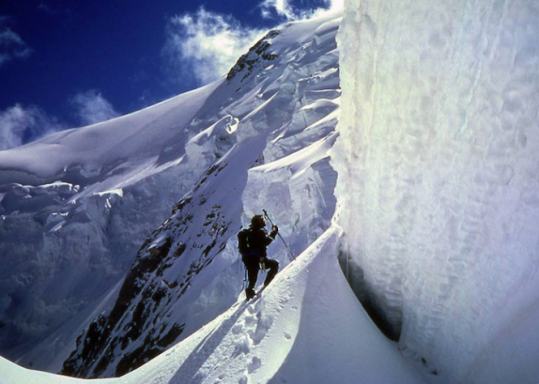We reported on the German tragedies of 1934 and 1937 on Nanga Parbat, followed by Hermann Buhl's astonishing victory in 1953 on the north face of Rakhiot. Under the leadership of the indomitable Dr Karl Maria Herrligkoffer, the western slopes of Diamir and finally the southern slopes of Rupal gave way over the years. But the 'killer mountain' was not finished yet. Siegfried Löw, first on the Kinshofer route on the Diamir slope in 1962, then Günther Messner in 1970 on the Rupal slope, also fell victim to the fearsome mountain.
See all our climbs above 8,000 meters.
Expedition 1961, the Diamir slope reveals its secrets
The 1953 victory on Nanga Parbat brought Dr Karl Maria Herrligkoffer his crowning glory. The publication of Hermann Buhl's book, which went against the initial exclusivity contract signed between Herrligkoffer and each member of the expedition, led to legal disputes that turned out in the Doctor's favour. From then on, all the doors were open to him. He was to be the real mastermind behind almost all the expeditions to Nanga Parbat until 1975: no fewer than eight to his credit.
In 1961, he organised his second expedition. His objective was to reconnoitre the Diamir side. Although steeper, it was more direct than the Rakhiot side. Mummery had already foreseen this. Taking a route to the left of the "Mummery Spurs", Tony Kinshofer and Siegfried Löw reached 7,100 m, but were delayed by bad weather. However, they thought they had found the right route, less strenuous than the Rakhiot, with its terrible, never-ending ridge.
1962: the Kinshofer way
1962 sees efforts rewarded. Herrligkoffer was still at the helm, of course. Back to the Diamir side. Following the same route as in 1961, the climbers reached the ridge that separates the Diamir side from the Rupal side.
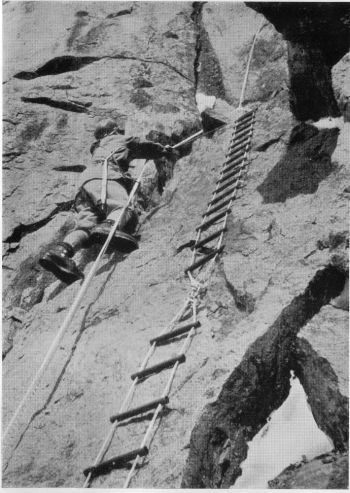
Installation of a ladder to facilitate the passage of porters between camps I and II (6,000 m) © Himalayan Journal
On 22 June 1962, Anderl Mannhardt, Toni Kinshofer and Siegfried Löw reached the summit at 5pm. They too had to bivouac on the way down, without appropriate equipment. The next day, in the early hours of the descent, Siegfried Löw lost his balance and fell to his death. Kinshofer stayed with the dying Löw all day and watched helplessly as his companion died, before setting off again in the night for camp III. He arrived there at 8am the next day, in a state of total exhaustion. All three were also taking Pervitin, one of the side-effects of which causes dizziness. The Diamir slope has given way, but the curse of the Nanga has claimed a new victim.
Today, the most frequently used access route is still the Kinshofer route, even if it is slightly different from the original route.
The Rupal side
Two of the three faces of Nanga Parbat have been climbed. What remains is the terrible south face, the Rupal side. After seeing it, Hermann Buhl exclaimed: "4,500 vertical metres of rock and ice. Even an attempt would already be a suicide".
On three occasions, in 1963, 1964 (in winter) and 1968, Herrligkoffer led German expeditions up this formidable slope. The south-south-east arête concentrates all efforts. But injuries and difficult climatic conditions put an end to all these attempts. 7,100 m, the highest point reached in 1968. There are still a thousand metres to go.
1970: the Messner brothers discover the Himalayas
For his seventh expedition to Nanga Parbat in 1970, Dr Herrligkoffer, then aged 54, pulled out all the stops: eighteen climbers. Fourteen Germans, two Austrians and two Italians from Alto Adige, the brothers Günther (24) and Reinhold Messner (26). A journey of initiation for both of them. They have never set foot in the Himalayas. But Reinhold made a name for himself in 1969 with his solo ascent of the famous Philipp-Flamm dihedral at La Civetta in the Dolomites. A thousand metres up the sixth degree, this feat earned him the honour of being Herrligkoffer's "guest", along with his brother Günther, an inseparable rope-mate on numerous climbs.
Any resemblance between Reinhold Messner and the highly individualistic personality of Hermann Buhl... cannot be ruled out!
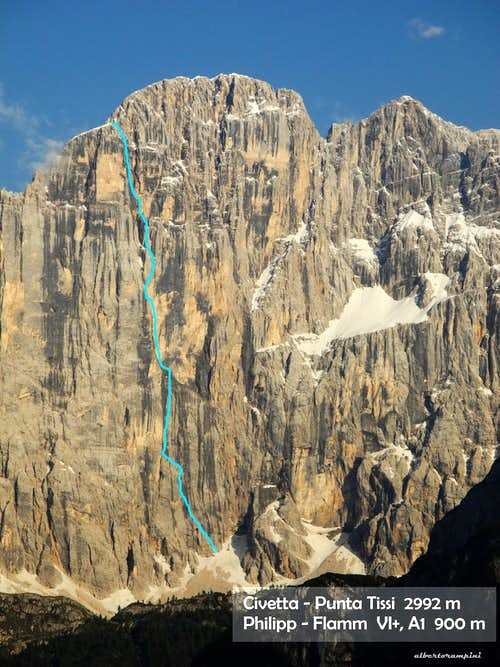
Opened in 1957, the Philpp-Flamm route to Punta Tissi (Civetta) has long been considered the most difficult route in the Dolomites © summit-post.org
26 June, armed vigil
The whole team is progressing normally, you might say. Portages, fixed ropes, bad weather. In short, it was business as usual. Up to 7,000 m, the route of the south-south-east ridge is now well known. Camp V at 7,200 m on 26 June. There are still 900m to climb, including one of the most difficult sections, the "Merkl" couloir, a mixed route (ice, snow and rock) leading to the southern summit (8,042m). Due to its steepness and difficulty, the descent has to be secured with fixed ropes. Two roped parties are hard at work: heading for camp V are the Messner brothers, with cameraman Gerhard Baur. Waiting at camp IV (6,800 m) was the summit team chosen by Herrligkoffer, made up of two Germans: Félix Kuen and Peter Scholz.
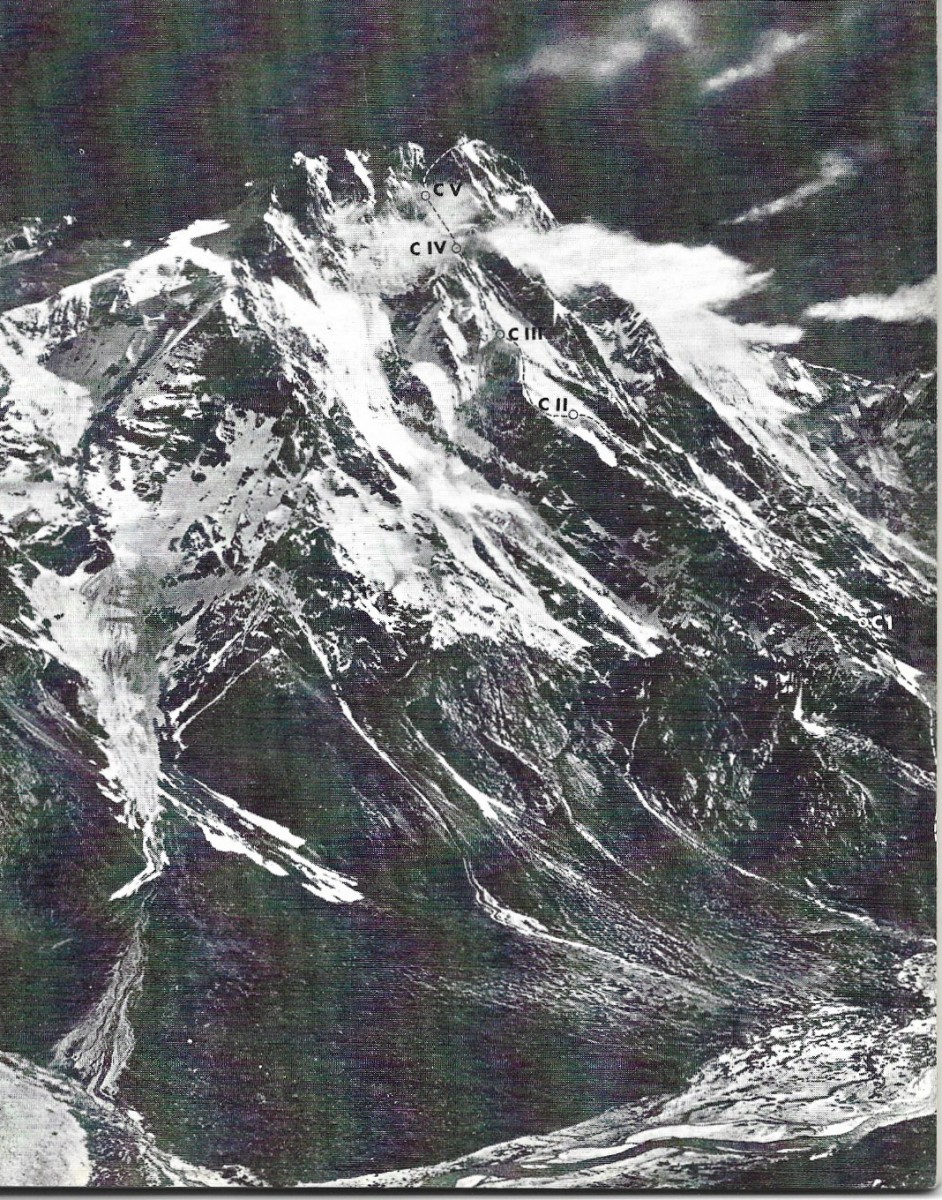
South face of Nanga Parbat, Rupal face, 1970 route with camp locations © La montagne & alpinisme
The "Merkl" couloir, key passage to the summit
In 1970, the means of communication between the base camp and the higher camps were still rudimentary. There were no radios between the camps, and of course no telephones! Once again, the monsoon threatened: Herrligkoffer received weather reports from the base camp. If the weather was fine on 27 and 28 June, he would have to fire a blue rocket. This was a sign for the Messner brothers to fit out the "Merkl" couloir with fixed ropes, opening up the route to the Kuen and Scholz assault team. In the event of bad weather, he had to fire a red rocket. According to Messner, Herrligkoffer gave him permission to make an attempt "towards" the summit on his own, before returning down to camp V. Herrligkoffer later emphatically denied this version. From then on, the story got out of hand.
.jpg) Upper part of the track. Location of camps II, III, IV and V. M: Merkl couloir; E: south shoulder © La montagne & alpinisme
Upper part of the track. Location of camps II, III, IV and V. M: Merkl couloir; E: south shoulder © La montagne & alpinisme
A red rocket on Nanga Parbat
26th June afternoon. Günther and Reinhold are climbing towards camp V, accompanied by Gerhard Baur. Suddenly, a red rocket rises into the sky: the monsoon is on its way. In fact, the weather would continue to be fine for several days, so the red rocket was a mistake... There would have been no blue rocket within reach of Herrligkoffer to correct the information. The die was cast.
27th June 1970. Reinhold Messner set off alone, without rope or bivouac equipment. Günther Messner and Gerhard Baur had to put up the fixed ropes to help him get back. For reasons that are unclear, Gerhard returns to the camp, perhaps too tired. Günther decided to carry on and join his brother. He didn't bring a rope either. Despite the difficulty of the climb, he managed to catch up with Reinhold and the two of them set off for the summit, which they reached in the late afternoon. The slope of the Rupal had been conquered. They gave themselves an hour of glory. But Günther, exhausted, didn't feel like going back down, without a rope, via the dangerous "Merkl" couloir.
Crossing Nanga Parbat: a descent into hell
The only option is to descend the Diamir side, which is less difficult but which they have never climbed. Finding your way through this glacial maze is a real challenge. At around 7,800 m, they reach a saddle from which they can see the ascent route and perhaps call for help. First rough bivouac. Günther is delirious. They have nothing to eat or drink. The next day, Reinhold looks up again and sees two silhouettes: Kuen and Scholz were climbing roped up, on their way to the summit despite everything. They spoke to each other, but the wind and the distance between them made it difficult to talk. Kuen and Scholz don't understand their companions' distress and, with the help of Pervitin, disappear towards the top. The two brothers then embark on the unknown side of the Diamir.
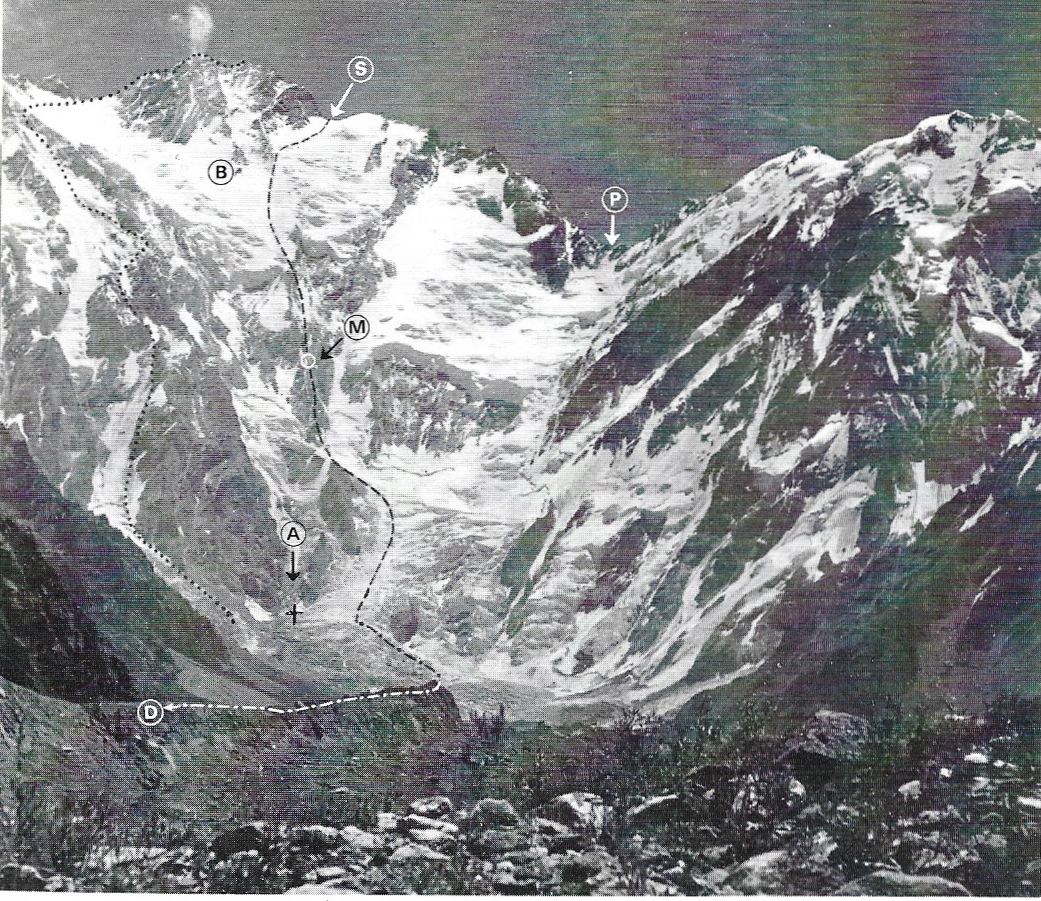 Diamir slope, bivouac sites of the Messner brothers © La montagne & alpinisme
Diamir slope, bivouac sites of the Messner brothers © La montagne & alpinisme
The martyr's path
Twenty-four hours of nightmarish climbing followed, with Reinhold sometimes walking far ahead to find the right route in the afternoon mist. Despite the absence of a rope, they descended the famous "Mummery Spurs", a particularly tricky rock passage, by the dim light of the moon. In the morning, Reinhold finally reached the edge of a spring near the ice front. But Günther didn't follow. Reinhold climbed back up, and throughout the day waded through the soft snow in search of his younger brother. At the end of the day, a recent avalanche cone fills him with dread: Günther has probably been buried. A new bivouac. His shoes, now soaked with water, caused his feet to freeze. The next day, he continued his search, making desperate calls that were echoed only by the silence of the mountain. Another night under a large boulder.
On the third day, hobbling along, he reached the Diamir valley, where some peasants took him in and helped him. But it would be another week before he found the rest of the expedition who, believing them both to be dead, had packed their bags and headed for Gilgit.
The founding ascension of the "Fourteen Eight Thousand
The bad tongues will say: Reinhold Messner certainly succeeded in making the first crossing of Nanga Parbat, but at the cost of his brother's life. A heavy guilt to bear. Following this dramatic ascent, Messner had to amputate seven of his toes. Farewell to the great rock climbs. On to the fourteen eight-thousanders, which would bring him ultimate glory.
Epilogue
A man's right fibula was found at the foot of the Diamir glacier in 2000. An in-depth investigation proved that it did indeed belong to Günther, thereby dispelling many doubts about the version of events that has pitted Reinhold Messner against Dr Karl Maria Herrligkoffer ever since.
Climb Nanga Parbat at 8,126 meters in Pakistan.
Text by Didier Mille.
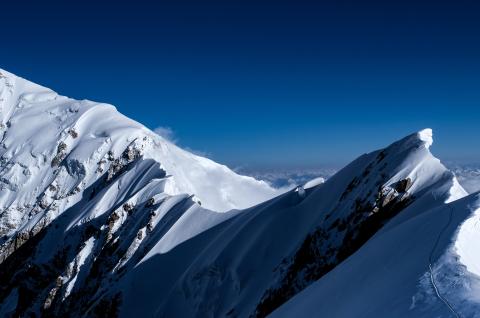
Climb Nanga Parbat at 8126 meters in Pakistan
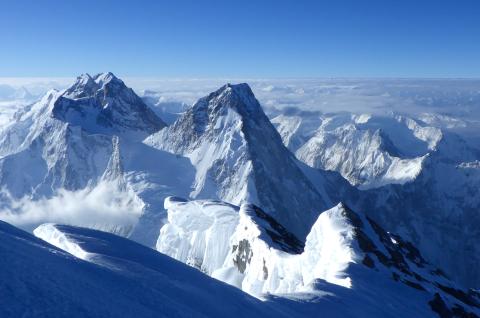
Climb Broad Peak at 8047 meters in Pakistan
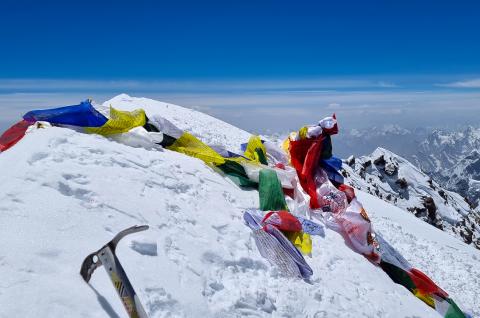

 Expeditions Unlimited blog
Expeditions Unlimited blog